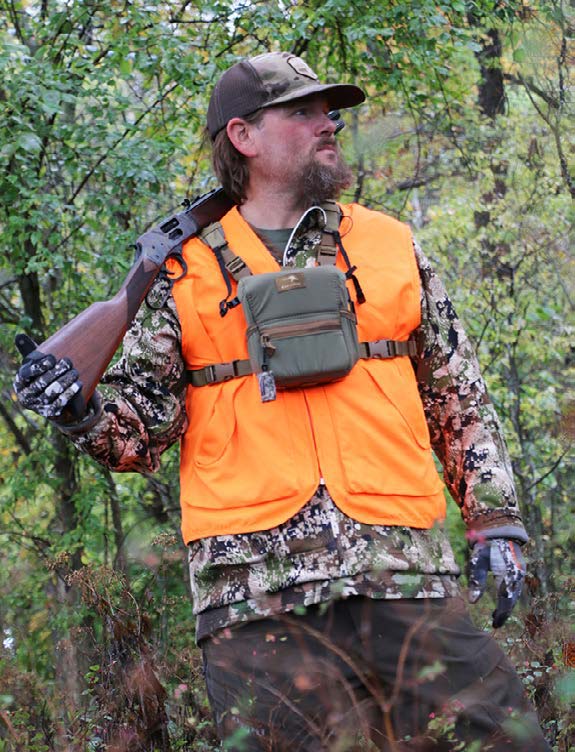Finding, Preparing and Hunting the Whitetail Property of Your Dreams
Hunting leases continue to gain popularity. I’ve leased numerous properties throughout the years, and I’ve experienced a high success rate in doing so. But there are things you need to know, especially when setting up a long-distance deer hunting lease. While this isn’t an exhaustive list or plan, but here’s a solid process to get you started and some of the important things you need to know.
Find The Right Property
Finding a lease is difficult these days. If you do find one, chances are good that you’ll pay a hefty price. You can find properties by word of mouth or through hunting lease agencies. While finding a lease isn’t easy, finding the right property is even more difficult.
You can improve on a property even if its propensity for deer hunting isn’t that great. But you can only do so much. That’s why it’s important to start with the right canvas. Find a great piece of land and you’ll be much better off in the long run. Of course, there are numerous factors that influence how good of a property a particular piece of land will or won’t be.
First, study aerial maps of the property. If it looks good, chances are it might be. Look for signs of good bedding areas, food sources and water sources. These are the three major needs of deer.
Whitetails also need security. If you’re leasing a smaller property, it’s best to find one that shares borders with as few neighbors as possible since this sometimes (not always) translates to less hunting pressure in the area. With less hunting pressure comes more deer, older bucks and better daylight movement.
The parcel also needs to offer plenty of treestand locations that seem to have good entry and exit locations. If the property looks good, but the access is bad, you may rarely (if ever) make it to a stand location without ruining the hunt or leaving it without applying pressure to deer. Either way, those conditions degrade the property over time.
If the property passes your digital scouting efforts, it’s time to view the parcel in person. With permission from the landowner, go afield and see if the site checks the necessary boxes mentioned above. If it does, move on to obtain additional verification.
For example, scout for deer sign, such as beds, rubs, scrapes, droppings, tracks and trails. If it seems like the deer population is at a solid level and everything points to a good buck age structure, this likely is a good place to lease.
There are other aspects to consider as well. One of these is the landowner. Is the person someone you be- lieve is compatible? What about renters, tenants, farm- ers and others who use the property? If you can’t get along with everyone, those conditions can lead to prob- lems down the road. It might sound rudimentary, but you need to meet, or at least speak with, the landowner. (And make sure they are in fact the actual landowner, and that they have no plans to sell.)
If all these things pass inspection, it’s time to secure the lease. Sign a lease agreement that protects both the landowner(s) and hunter(s). Make sure you get exclusive hunting rights. Also, purchase a liability insurance policy that covers all parties involved.
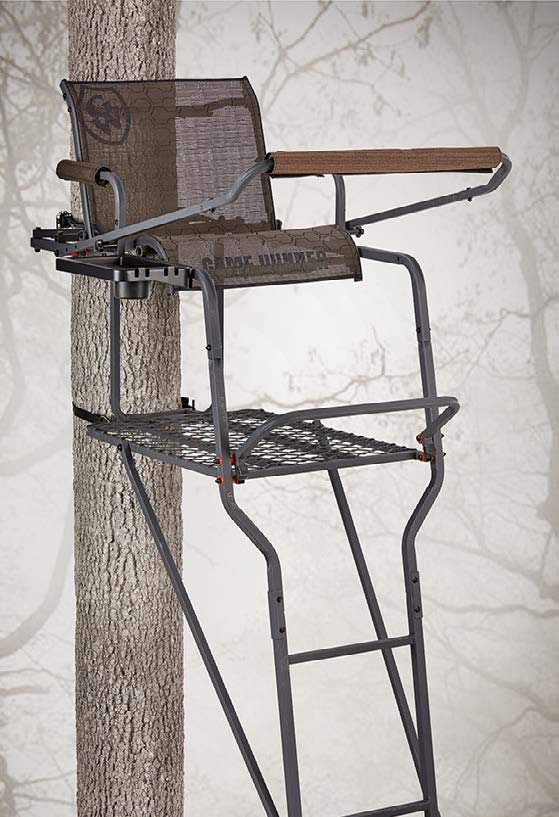
Deploy Your Gear
Once you’ve paid for the lease, it’s time to set your parcel up. Of course, you’ll want to hang permanent tree- stands, position mobile treestands (such as climbers) in strategic locations and even brush in some ground blinds.
Personally, I prefer to deploy hang-on treestands, such as the Game Winner Hang-On 2.0 in bowhunt- ing-centric spots. These are good for areas within cover and nearer to bedding and staging areas. They have a smaller profile, are lighter in weight, and fit into tighter spaces. Ladder stands, such as the Game Winner 18-Ft Platform Ladder Stand, are great for bowhunting, but especially for gun hunting. That’s even more the case with a good shooting rail in place.
Ground blinds are perfect for spots that can’t sup- port treestands. These are also great for rainy or snowy days, late-season cold snaps, marginal wind directions, multiple hunters and more. Placing them correctly, then brushing them in well to blend with the surroundings can result in a great hunt.
Regardless of whether you use blinds, treestands or both, locate these in high-odds locations. From a high-level point of view, these spots should include fringes of bedding areas, staging areas, travel routes, food sources and water sources. Zooming in, these areas might consist of leeward ridges, ridge lines, ridge endings, benches, marsh islands, swamp islands, hubs, flats, oxbows, peninsulas, coves, thermal cover, solar cover, CRP, cutover timber, standing crops, harvested crops and watering holes. All these and other areas that provide early successional bedding habitat, food sources or water sources help make your parcel viable.
In addition to stands and blinds, trail cameras should also be deployed. Where legal, cellular models are per- fect for long-distance leases. If they are equipped with a solar panel or external battery source and a reliable high-capacity SD card, these can go weeks or even months without the need to revisit them. You can continue to check these from your phone. Still, I prefer to pair cellular cameras with a non-cellular model just in case batteries die or a camera malfunctions. The non-cellular camera is likely still capturing images.
Remember to think about the little things, too. You live quite a distance from your lease and making extra trips to fix things isn’t an option. So, make sure tree- stands are positioned properly and safely. Ensure trail cameras aren’t pointing toward the sun’s path. Prep all entry and exit routes and complete other tasks as needed.
Whatever gear types you choose to place on your hunting lease, use quality items. Purchase the best your budget allows. You don’t want to drop a bunch of cash on a lease just to have your treestands, blinds, trail cameras and other gear items let you down.
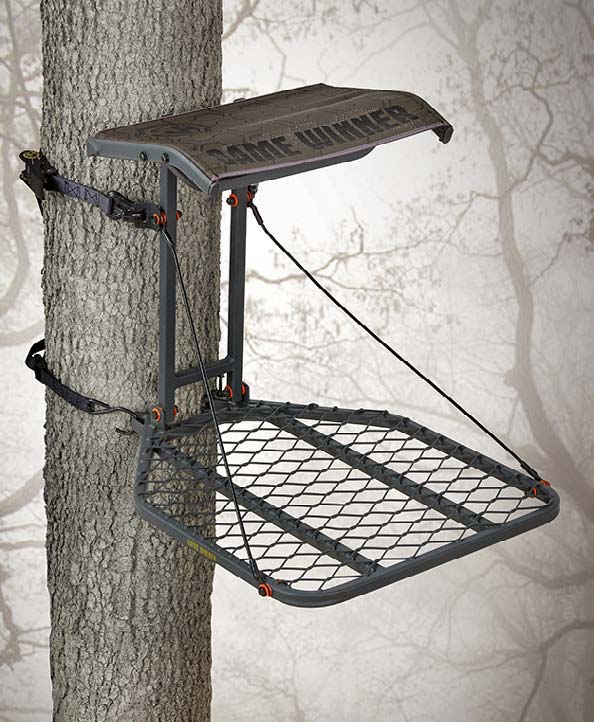
Provide Some Incentives
After taking care of the essentials, including tree- stands, blinds and cameras, it’s time to spice up the lease even more. If the landowner allows, put in some food plots in strategic locations. Small micro plots posi- tioned along lines of movement (along travel routes be- tween bedding areas and large destination food sources) can be excellent spots to intercept deer.
Alfalfa, buckwheat, chicory, clover, cowpeas, lablab, milo, soybeans, sunflowers and other crops are great early-season options. Beets, cereal rye, clover, corn, oats, radishes, soybeans, turnips, wheat and winter peas make good mid-to late-season plots.
In addition to food plots, supplemental feeding is an excellent choice if permitted by the state wildlife agency. Feed corn for boosting carbohydrates. Offer protein pellets for additional protein. Supply trace mineral as well as other key minerals. Using high-quality feeders, such as the Game Winner 600-Pound Big-A VP Feeder, can deliver rations reliably, effectively holding deer closer to the lease, and perhaps even helping develop patterns.
Food sources aside, hunters can also put in water holes, mock scrapes, scrape trees, and rubbing posts in strategic locations. These might be near stand locations to pose deer for shot opportunities. It might also be in front of trail cameras to capture better images. Regard- less, this is something you can do to achieve goals.
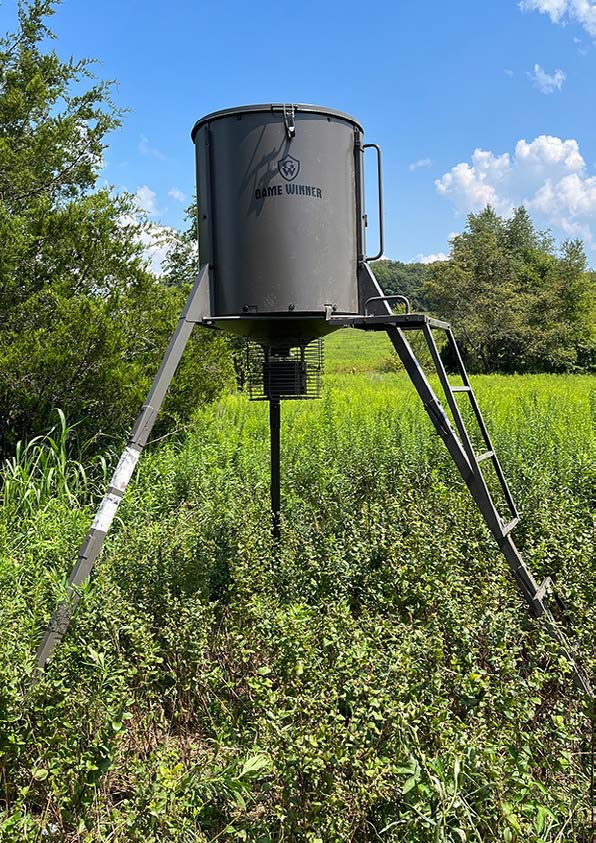
Common Mistakes To Avoid
There are many mistakes you can make on your hunting lease. The chief of these is ignoring safety rules. Always put safety first when searching for, traveling to, setting up, hunting on and pulling gear from a lease.
Never put yourself in harm’s way. For example, never leave the ground without wearing a safety harness and being tied in with a lineman’s belt or safety line.
Don’t lease next to a hunting outfitter. While some are managed properly, others aren’t. It’s best not to take the risk. Instead, do your research and lease next to properties that are less likely to see hunting pressure. Or, if they do see pressure, make it from hunters who aren’t very good at what they do.
Also, make sure treestands are at the appropriate height. Don’t hang them too high or too low. Further- more, place these in areas with acceptable entry and exit routes. If you can get there without spooking your target deer, but can’t leave without doing so, it’s good for one hunt only. If you can’t even get there without spooking it, it’s good for zero hunts.
There are plenty of other mistakes to avoid, but not having fun is one of them. That’s what you’re after anyway—fun. So do your best to set yourself up for success then enjoy deer season. It might seem long, but it passes quite quickly. Enjoy it while it lasts.
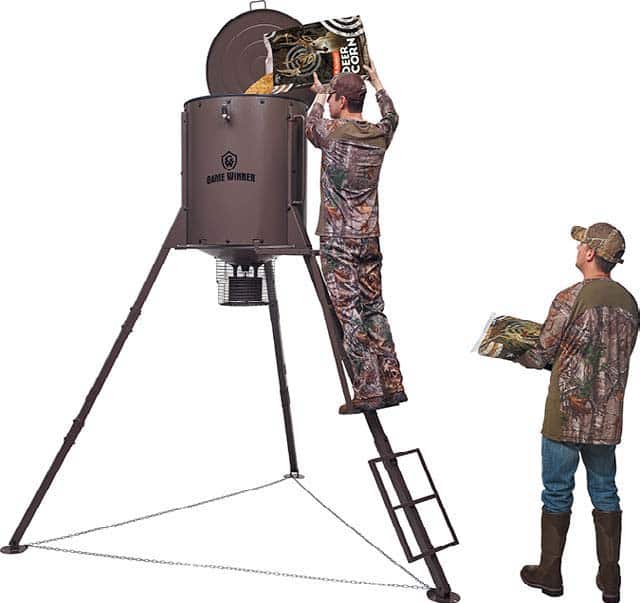
DEER LEASE RULES
- Have a hunting lease contract.
- Secure hunting lease
- Respect the land and
- Create a list of lease
- Follow the list of lease
- Create a guest
- Follow the guest
- Have “shoot” and “no shoot” lists for
- Follow these lists to the
- List acceptable wind directions for stand
- Choose stand locations
- Chart entry and exit
- Only stray from entry and exit routes if
- Share the lease
- Share the lease
- Be fair in everything you
- Listen to the lease
- Leave the property better than you found
Per our affiliate disclosure, we may earn revenue from the products available on this page. To learn more about how we test gear, click here.



